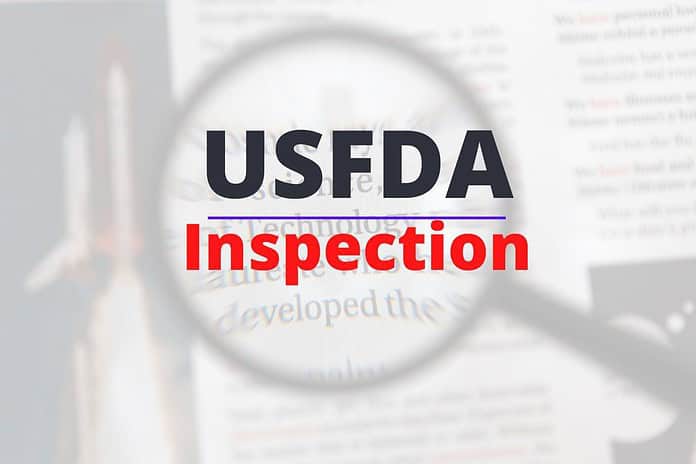Last Updated on October 11, 2024 by The Health Master
Inspection of Pharma Companies
A Congressional Committee under the House of Representatives in the United States is currently overseeing the U.S. Food and Drug Administration‘s (USFDA) foreign drug inspection program.
As part of their efforts to address drug shortage issues, the Committee has raised concerns about drug imports from India and China.
The USFDA’s recent decision to temporarily import unapproved drugs from these countries has made effective foreign inspection programs critical.
The Committee is particularly concerned about violations in Indian and Chinese manufacturing facilities, as these countries are major sources of generic drugs and active pharmaceutical ingredients (APIs) for the U.S. market.
The Committee’s Inquiry
The Committee, consisting of Chair Cathy McMorris Rodgers (R-WA), Subcommittee on Health Chair Brett Guthrie (R-KY), and Subcommittee on Oversight and Investigations Chair Morgan Griffith (R-VA), has sent a letter to Dr. Robert M Califf, the Commissioner of the USFDA, seeking clarifications on various issues:
Reasons for Ending Unannounced Inspection Program in India:
The Committee wants the USFDA to provide a detailed explanation for why it terminated the unannounced inspection pilot program that was conducted in India from 2014 to 2015.
This program eliminated extended advance notice for inspections and was successful in uncovering widespread misconduct and significant violations of USFDA regulations.
Insufficient Foreign Inspections in India and China:
The Committee expressed concerns over the insufficient number of foreign direct inspections conducted in India and China, despite the fact that a large percentage of generic drugs and APIs come from these countries.
The Committee wants to understand the rationale behind this lower level of inspections and its implications for drug safety in the U.S.
Foreign Manufacturer Inspections and Warning Letters:
The Committee requested a list of foreign facilities in India that have received Warning Letters in the last 10 years and whether they have been inspected in-person, remotely, or not inspected at all since receiving the Warning Letter.
Additionally, they asked for information on the number of inspections conducted for Indian manufacturers in the last decade and whether Warning Letters were lifted before USFDA investigators filed reports, allowing the companies to get approvals for drug shortage products or abbreviated new drug applications (ANDAs).
Communication Gap Regarding Intas Pharmaceuticals:
The Committee raised questions about the voluntary halt of operations by Intas Pharmaceuticals in its Ahmedabad plant, which was manufacturing chemotherapy drugs for the U.S. market.
The USFDA’s statement that it was unaware of the company’s plans to halt operations after being aware of significant quality control failures at the facility has raised concerns about communication lapses.
The Committee wants detailed explanations and relevant documents related to this issue.
Challenges with In-Person Inspections in China:
The Committee pointed out that China presents even more dangerous situations than India.
Recent political developments in China may jeopardize the viability of the USFDA’s in-person inspections there due to the new interpretation of the National Security Law.
This could potentially affect the safety of drug imports from China.
Impact on Indian Pharma Exports to the U.S.
The Committee’s observations and any potential tightening of standards by the U.S. drug regulator could have significant implications for Indian pharma exports to the U.S. Currently, the U.S. is one of the largest export destinations for the Indian pharma industry, accounting for around 30-35% of total formulation exports.
However, regulatory challenges and lower ANDA approvals may constrain exports to developed markets.
Despite this, there are opportunities in the synthesis segment, complex and specialty products, and easing pricing pressure in U.S. generics, which could support growth in the medium term.
Conclusion
The Congressional Committee’s inquiry into the USFDA’s foreign drug inspection program and concerns about imports from India and China reflect a commitment to ensuring drug safety and addressing potential shortages.
The USFDA’s responses and any actions taken as a result of the inquiry will be crucial in safeguarding public health and maintaining the integrity of drug imports from these countries.
As the pharmaceutical industry faces various challenges and opportunities, it remains essential to strike a balance between regulatory compliance and promoting growth in the global market.
Disclaimer: This article contains information derived from Pharmabiz. Our team utilized an AI language model, to rewrite and present the news / article in a unique format.
AHUs, Air Types, Air Changes and their Functions in Pharma Industry
Third Phase of Risk Based Inspections on Pharma Companies concluded: Gujarat
Pharmacy Council appoints four Pharmacy Inspectors: Karnataka
USFDA approves this drug to prevent RSV in babies and toddlers
Drug alert: DCGI issues drug alert on usage of cough and cold medicine
Govt Job: for the post of Director at CDTL – Central Drugs Testing Laboratory
USFDA gives approval for Chlorpromazine HCL tablets
The importance of NABL Accreditation in international Pharma Trade for MSMEs
Pharma Industry urges Govt to authorize Private labs to test cough syrups
USFDA indicates voluntary action for Aurobindo Pharma:: AP
For informative videos by The Health Master, click on the below YouTube icon:
For informative videos on Medical Store / Pharmacy, click on the below YouTube icon:
For informative videos on the news regarding Pharma / Medical Devices / Cosmetics / Homoeopathy etc., click on the below YouTube icon:
For informative videos on consumer awareness, click on the below YouTube icon:









